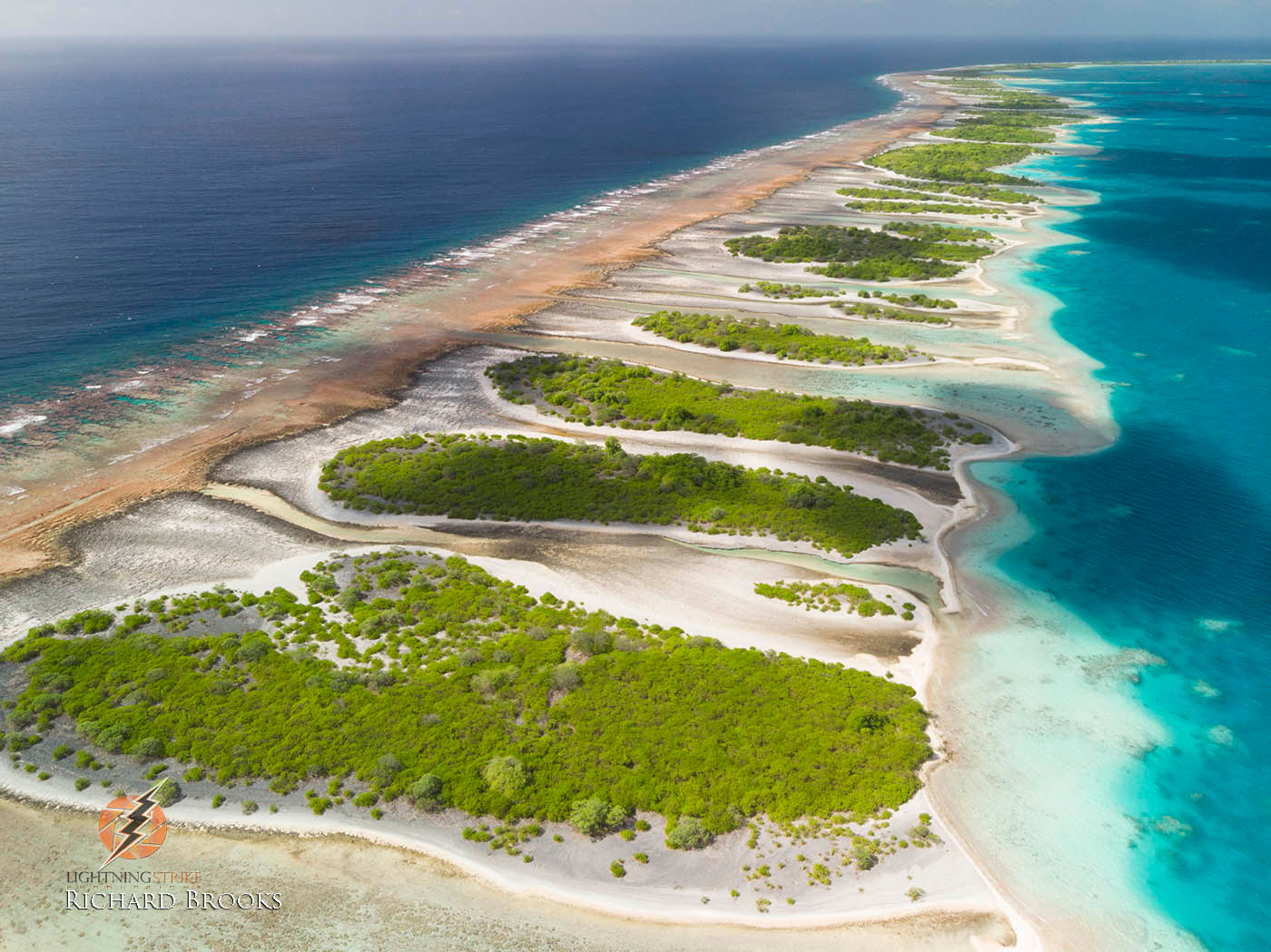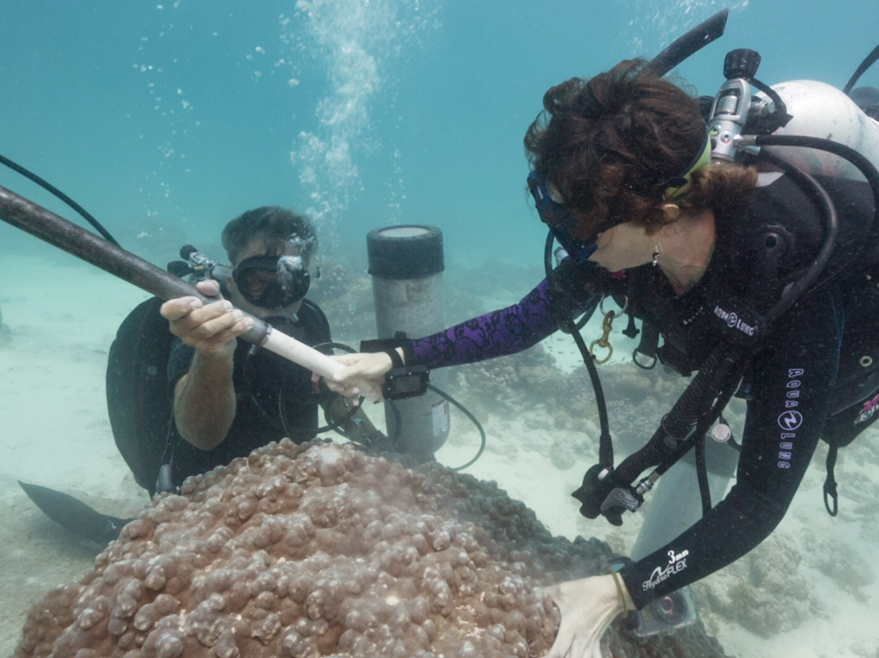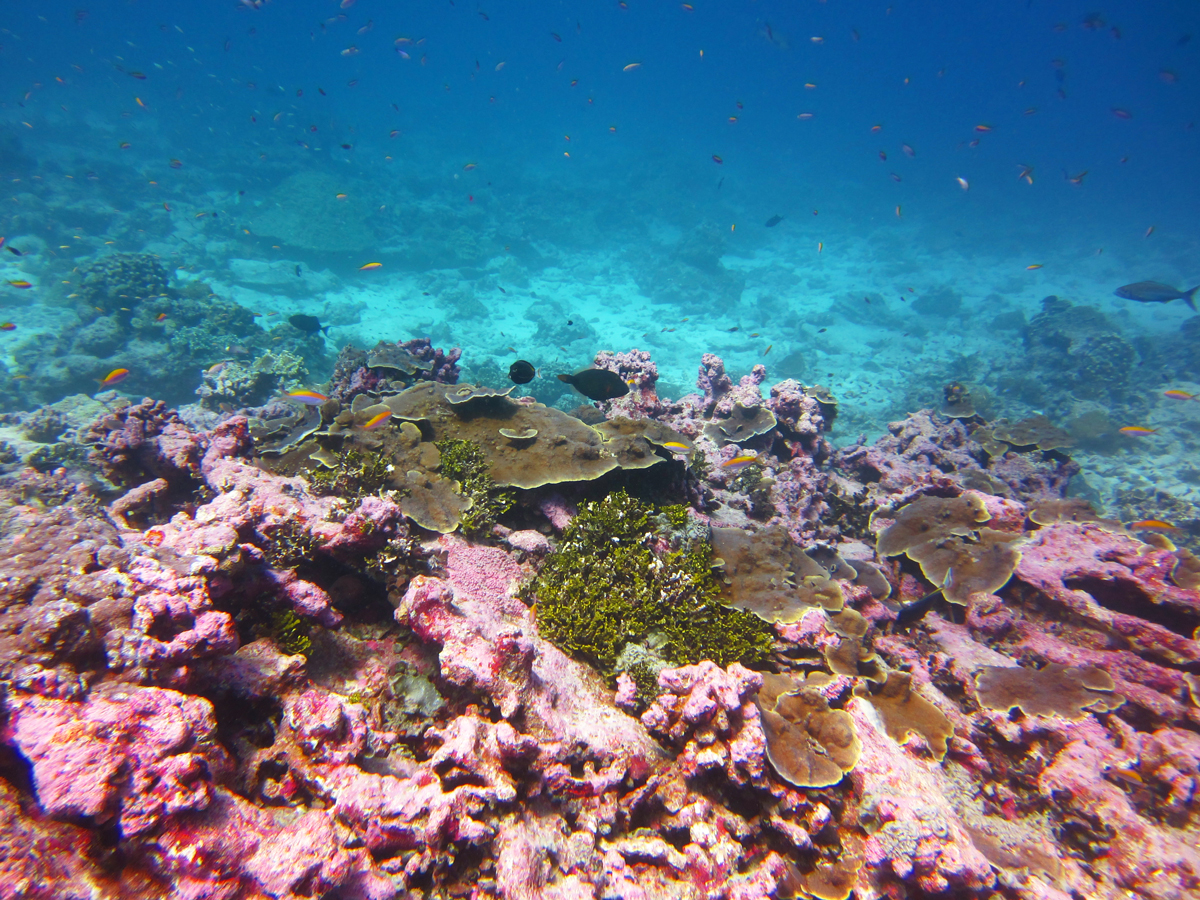Our Process
Finding temperature-resilient reefs and corals builds on the unique strengths of each of our partners to create a powerful way of designing Marine Protected areas and to use these for farming and restoration to help ensure the future of corals worldwide.
The Challenge
Coral reefs occupy barely 1 percent of Earth’s surface, yet they host more than one-quarter of marine life, protect communities and of coastlines from waves and storms, and support almost 1 billion people. They are the tropical ocean’s most valuable ecosystem, yet their future is highly uncertain. Climate change, particularly ocean warming, has already killed thousands of square kilometers of reef and extinction looms as ocean temperatures rise.
The Hope
Newly discovered “Super Reefs” have the ability to survive in a rapidly warming ocean. With state-of-the-art tools and technologies that include autonomous underwater vehicles, hydrodynamic modeling, and genomic analysis, our team is locating these extraordinary places, and uncovering their secrets. Some are genetically adapted to resist extreme heat; others are cooled by natural oceanographic processes. Super Reefs that survive will naturally restock neighboring regions and will provide the source to restock reefs worldwide.
The Future
Ensuring the future of coral reefs starts with the protection of Super Reefs from overfishing, pollution, dynamiting, and development. Governments of coral reef nations, conservation groups, and resource managers around the world know that climate resilience is key to effective MPA design and long-term restoration efforts. But the tools to identify resilient corals and resilient reefs have been lacking. Until now.
The Team
Experts in ocean science, conservation, and management together with trusted government and community partners, have teamed up at a critical time in the history of coral reefs on our planet. Our goal is to realize a future for corals and the life they support.
- TARGET coral reef MPAs under construction in the Pacific, Atlantic, and Indian Oceans
- DEVELOP 3D realistic hydrodynamic models to identify potential Super Reef locations
- DEPLOY divers and autonomous vehicles to collect initial data
- CONDUCT heat stress and genomics testing to confirm heat tolerance
- ESTABLISH larval connectivity between Super Reefs and neighboring location
- SYNTHESIZE data into spatial map of manageable, climate-resilient reef locations and tailor MPA designs to current and projected local conditions
- BUILD community-run local nurseries of Super Reef corals to restore selected habitats with climate-resilient corals


